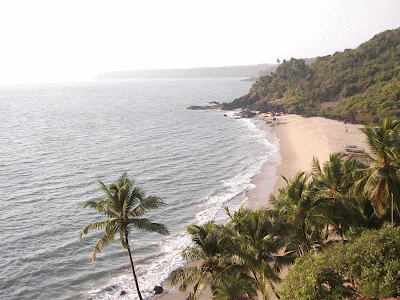How To Travel In India
By Emma Levine
Beautiful, eclectic, vast India can be intimidating for first-time visitors. Here are 10 tips that will help you make your first trip to India a smashing success.
1: Before You Go: Visas And Inoculations
Check in advance with your doctor or nurse what injections are required. Depending on which region and what time of year you visit, anti-malarial tablets may also be necessary. You’ll need to get a visa before departure, which comes into effect the date of issue, not the date of entry.
2: Luggage And The Best Way To Carry It
Unless you’re going straight to the door of your five-star hotel, it’s far easier to take a backpack, especially for getting around India’s rough roads and sidewalks. It’s also much easier for jumping on and off trains, keeping your hands free. The golden rule is to bring only what you’re able to easily carry yourself.
3: Getting Around India
If you plan to travel within India by plane, try and book those additional flights in advance. It will save you the hassles of trying to book these flights on the fly, especially important if you’re in India during high season (Christmas/New Year, plus major Indian holidays). It can be far more rewarding, if you have time, to travel by train – a major way of experiencing the country.
4: What To Eat
Of course it’s hugely enjoyable to dine on local cuisine. However, delicate stomachs may find India’s cuisine hard to handle. If you’re sampling street food, stick to hot, freshly cooked items. Avoid salads, which may have been washed in local water, and stick to fruit that has to be peeled (bananas, mango etc). It’s also advisable to only eat fish on coastal regions, where you know it’s more likely to be fresh. But majority of Indians don’t eat meat or fish, so here’s a country perfect for vegetarian visitors.
5: What To Drink
Stick to bottled drinking water (ensure it’s sealed when you buy it). Don’t drink tap water from your hotels, although it’s safe to brush your teeth in it. In street stalls and simple cafes, avoid ice in drinks, as this could have been made from untreated water. Fresh lime soda and lassi (a refreshing drink from curd) are both widely available, as are Indian brands of fizzy soda, cola etc. Indian tea is an acquired taste – very sweet and milky! The availability of alcohol varies in each state, but generally India doesn’t have a strong drinking culture. Local bars tend to be men-only hovels. Avoid domestic Indian spirits – stick to beer.
6: What to Wear
If in doubt, err on the side of modesty. Men and women should avoid shorts and tank tops, unless you’re on the beach. Women should avoid skimpy clothes; cover upper arms and stick to loose, long cotton tops and trousers. Remember, the less you draw attention to yourself, the better. Ladies, if you’re likely to be visiting temples or mosques, bring a light scarf to cover your hair when necessary. Remove your shoes when entering a place of worship and when visiting people’s homes.
7: How To Avoid Being Hassled
Foreign women may well be the target of unwanted attention. If you’re traveling without a man, it does help to prevent problems if you say you’re married. Wearing a “wedding” ring can also help. If you’re on the receiving end of uninvited attention from men, don’t be afraid to be assertive and make your annoyance very clear. Shouting can help! After all, you wouldn’t put up with it at home, would you?
8: Haggling
In most markets when buying anything, you’re expected to haggle. The stallholder will probably quote an inflated price; decide if you really want the product and counter with something perhaps a third of the price. Then expect to agree on a compromise. Small items in stores – bottled water, food items, pharmaceuticals – always have the price printed on the label, and is non-negotiable. When you’re using taxis or three-wheeler auto-rickshaws, the meter should be switched on. If not, agree the price in advance – don’t leave it to an awkward argument after your journey.
9: Getting The Most From Train Travel
Wherever you travel in India, it’s very likely that you’ll be taking at least one train journey. Indian Railways is an institution; it is the main way of moving this nation of more than one billion! There are many different classes of travel. For long journeys, take a sleeper in second or first class, and choose an upper birth if possible. Bring a chain and padlock to keep your bags secure, and keep your money and passport in a money belt under your clothes when sleeping. On most trains, food and drink (bottled water, cartons of fruit juice, tea) are available from vendors moving regularly up and down the carriages. Most railway stations have a separate booking office or counter for foreign tourists.
10: Be Prepared To Wait!
In India, one of its charms can also be the biggest frustration: delays. This is usually about transport; the ticket office is closed for a lengthy break, or a crucial person you need to speak to is not available. Bureaucracy can be endlessly frustrating. In such circumstances, use plenty of good humor and patience, and see it as a part of everyday Indian life. Don’t show anger – it will get you nowhere!
Article source by :- zagat
For more information visit :- http://www.travelthemes.in/





No comments:
Post a Comment